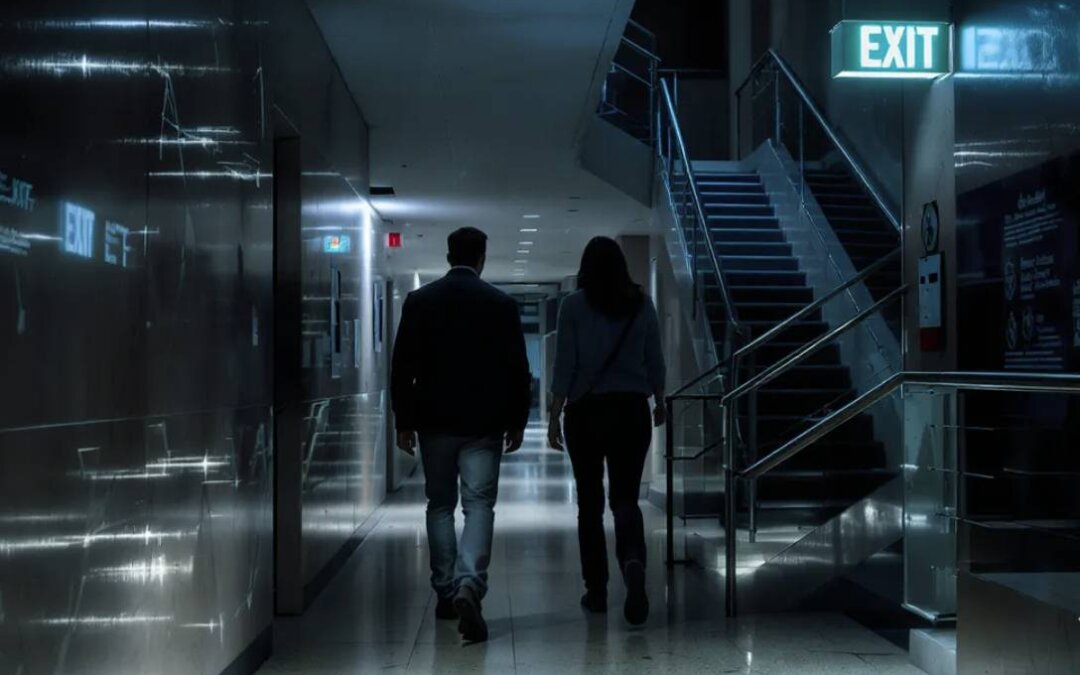Introduction
Emergency lighting is a critical part of modern fire safety systems. It helps ensure that occupants can safely evacuate buildings during power outages, fires, or other emergencies. For business owners, facility managers, and homeowners, understanding how these systems fit into fire safety equipment is essential for compliance with regulations and protecting lives.
In this comprehensive guide, we will explore the types of emergency lighting, how they work, their role in fire safety, and the regulations that govern their installation and maintenance. You will also find practical tips for selecting, installing, and maintaining these systems to ensure they perform well.
See our Emergency Lighting products
What gets measured gets managed.
Understanding Emergency Lighting
Emergency lighting refers to lights that automatically turn on when a building’s power supply fails. They provide illumination to help occupants evacuate safely and reduce panic during emergencies. This lighting is a vital part of the broader category of fire safety equipment, working alongside alarms, sprinklers, and other systems.
There are two main types of emergency lights:
- Emergency Escape Lighting – Helps occupants leave the building quickly and safely.
- Standby Lighting – Allows normal activities to continue during a power outage.
Type | Purpose | Typical Location |
|---|---|---|
| Emergency Escape Lighting | Safe evacuation | Corridors, staircases |
| Standby Lighting | Continue operations | Critical work areas |
The right type of emergency lighting depends on your facility’s specific needs. For example, in an office building, escape lighting may be prioritized, while in a hospital, standby lighting ensures critical operations continue.
How Emergency Lighting Works
Emergency lighting systems are typically powered by backup batteries or generators. When the main power fails, a control unit automatically switches to the backup source. The lights are strategically placed to illuminate escape routes, exits, and key safety points.
Most systems use LED technology for energy efficiency and longevity. They often integrate with fire alarm systems to activate during emergencies, even if the main power supply remains intact.
The core components include:
- Luminaries: The actual light fixtures.
- Control Gear: Switches power to emergency mode.
- Batteries/Generators: Provide backup power.
- Test Switches: Allow regular system testing.
Regulatory Compliance and Standards
Compliance with fire safety regulations is not optional; it is a legal requirement. In many countries, building codes specify where and how emergency lights must be installed. For example, the NFPA 101 Life Safety Code in the United States sets clear standards for illumination levels, duration, and testing frequency.
Emergency lighting must be capable of providing illumination for at least 90 minutes in the event of a power failure.
Key regulatory points:
- Minimum illumination of 1 foot-candle along escape routes.
- Lighting must last at least 90 minutes.
- Monthly functional tests and annual full-duration tests are required.
Choosing the Right Emergency Lighting System
Selecting the right system involves assessing your building’s size, occupancy type, and specific fire safety needs. Factors to consider include:
- Coverage Area: Ensure all escape routes and exits are lit.
- Battery Type: Nickel-cadmium, lithium-ion, or lead-acid.
- Integration: Compatibility with existing fire systems.
Battery Type | Lifespan | Cost |
|---|---|---|
| Nickel-Cadmium | 4-5 years | Medium |
| Lithium-Ion | 7-10 years | High |
| Lead-Acid | 3-4 years | Low |
Lithium-ion batteries offer the longest lifespan but come at a higher cost, making them ideal for critical facilities where reliability is crucial.
We also offer Intelligent Emergency Lighting Systems
Installation Best Practices
Proper installation is vital for ensuring that emergency lighting systems function when needed. Here are key best practices:
- Strategic Placement: Position lights along escape routes, at staircases, and near fire safety equipment.
- Avoid Obstructions: Ensure nothing blocks the light’s coverage.
- Professional Installation: Use certified electricians familiar with fire safety regulations.
- Integration Testing: Verify that lighting activates with fire alarms.
Following these practices reduces the risk of failure during an emergency and ensures compliance.
Maintenance and Testing Procedures
Regular maintenance is essential. Monthly tests confirm the system activates, while annual tests check full-duration operation. Maintenance logs should be kept for compliance audits.
Typical maintenance steps:
- Visual inspection for damage.
- Functional test of each light.
- Battery capacity check.
- Cleaning of fixtures.
Common Mistakes to Avoid
Even the best systems can fail if poorly managed. Avoid these mistakes:
- Neglecting regular tests.
- Using incompatible replacement parts.
- Blocking light fixtures with furniture or equipment.
- Ignoring integration with other fire systems.
Future Trends in Emergency Lighting
The future of emergency lighting is moving toward smart systems with remote monitoring, energy harvesting, and integration with building management systems. LED technology continues to improve, offering brighter light with lower energy consumption.
By adopting these innovations, facilities can enhance safety while reducing operational costs.
Conclusion
Emergency lighting is more than just a regulatory requirement; it is a life-saving part of any fire safety strategy. Business owners, facility managers, and homeowners should prioritize selecting, installing, and maintaining these systems to ensure they perform in critical moments.
From understanding the types and functions of emergency lighting to ensuring compliance with fire safety regulations, this guide has provided essential knowledge you need. Take action today to evaluate your current systems, schedule maintenance, and consider upgrades to meet the latest standards.
By doing so, you not only protect lives but also demonstrate a commitment to safety and responsibility.

